Mercury, the innermost planet in our solar system, is difficult to study from Earth because of its proximity to the Sun. Mariner 10 made the first closeup observations of Mercury during three flybys of the planet in 1974 and 1975, leaving scientists yearning for a longer and more detailed investigation to answer the many questions raised by those first observations. In 1999, NASA selected for flight the MErcury Surface, Space ENvironment, GEochemistry, and Ranging (MESSENGER) mission under the leadership of Principal Investigator Sean C. Solomon, Director of Lamont-Doherty Earth Observatory, Columbia University, to place a spacecraft in orbit around Mercury for an in-depth study of the small planet. The Johns Hopkins University Applied Physics Laboratory (APL) in Laurel, Maryland, designed, built, and operated the spacecraft for NASA. APL had to overcome numerous challenges to successfully accomplish the first orbital mission at Mercury, including the difficulty of reaching the innermost planet and operating a spacecraft in the much hotter environment much nearer to the Sun than most spacecraft had experienced. The first was solved by using a series of planetary gravity assist maneuvers to slow the spacecraft without using too much propellant so it could be inserted into orbit around Mercury and the second by the installation of a sunshade and radiators to maintain normal operating temperatures inside the spacecraft.
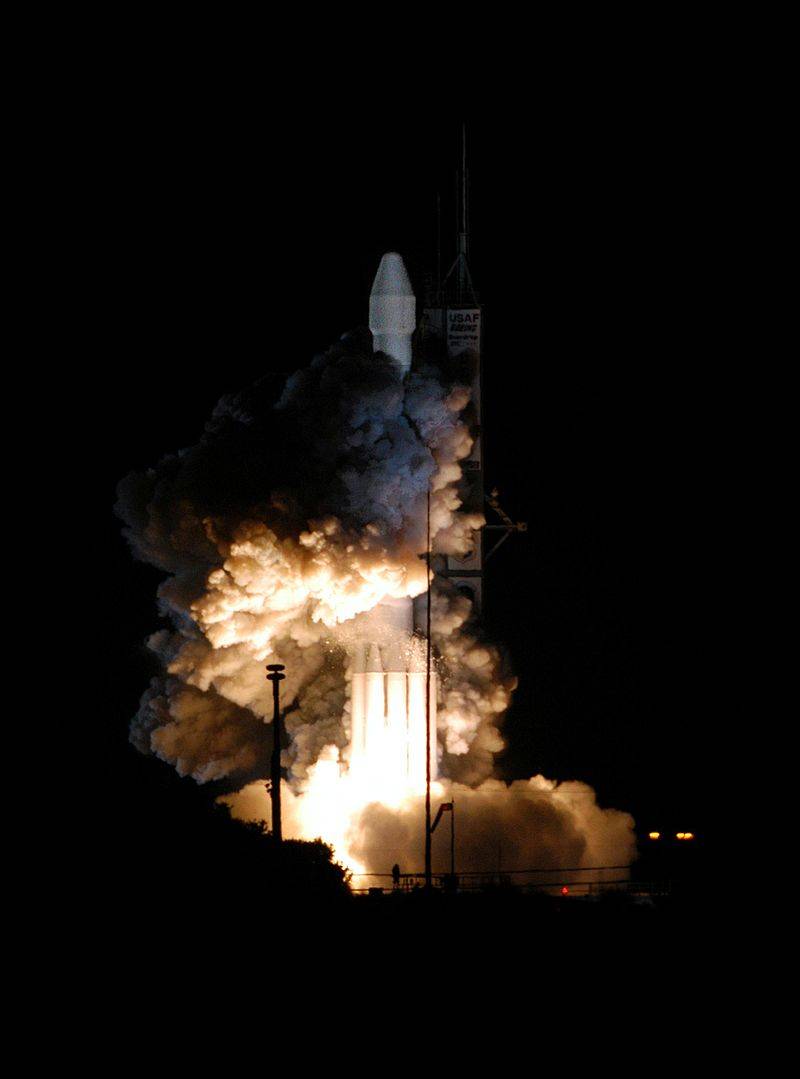
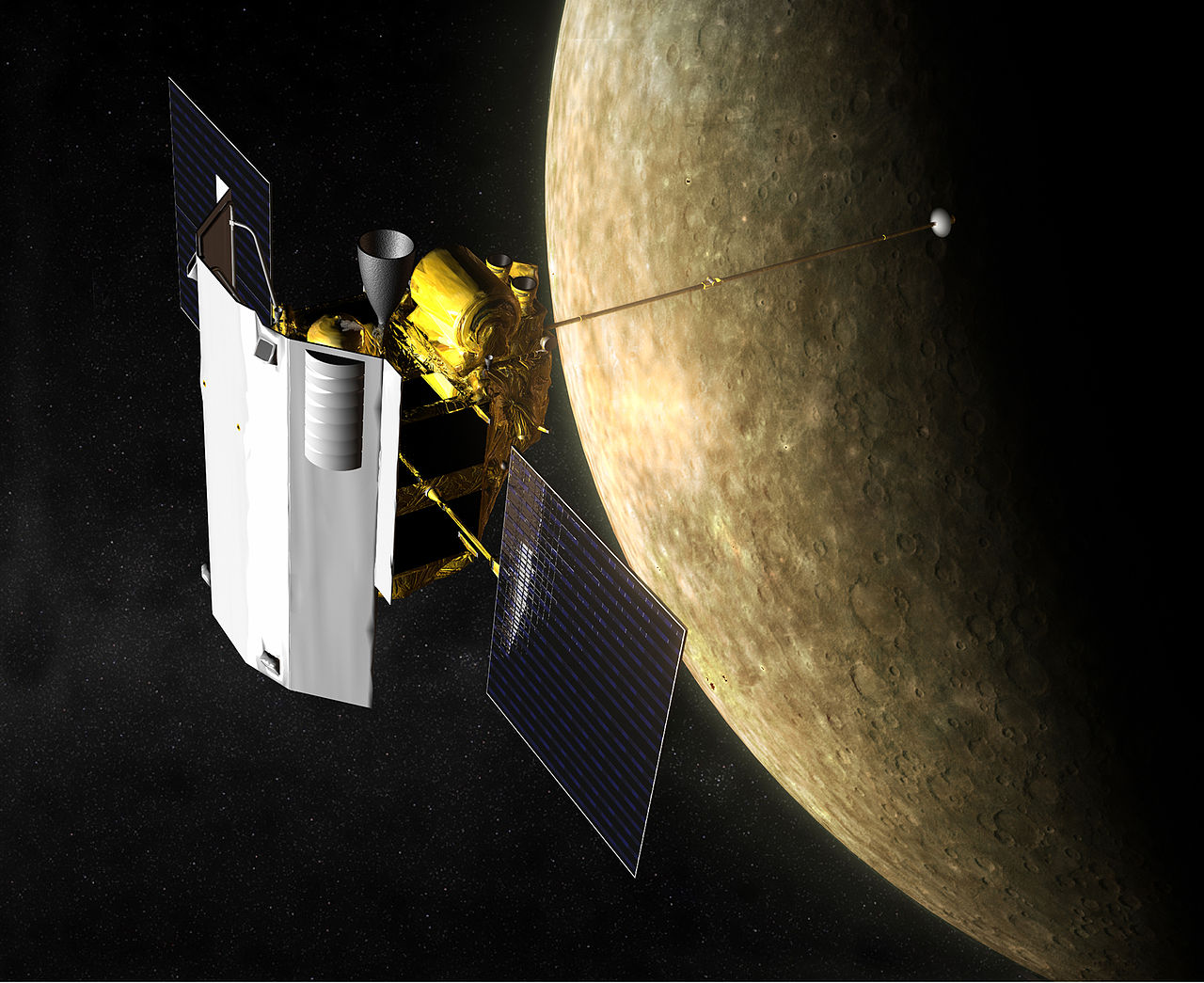
Left: Launch of MESSENGER. Right: Illustration of MESSENGER in orbit around Mercury.
The MESSENGER spacecraft was launched from Cape Canaveral, Florida, on Aug. 3, 2004, aboard a Delta II rocket, beginning a 4.9-billion-mile journey that took more than six and a half years. MESSENGER used several gravity-assists and course-correction maneuvers to lower its velocity so it could be propulsively inserted into orbit around Mercury. On Aug. 2, 2005, MESSENGER returned to Earth’s vicinity for the first gravity-assist flyby, passing within 1,459 miles of its home planet. This maneuver sent the spacecraft toward Venus, setting up two flybys of the cloud-shrouded planet, on Oct. 24, 2006, at a distance of 1,856 miles, and again on June 5, 2007, at a distance of just 210 miles. Then it was on to Mercury for three flybys, providing the first close-up looks at Mercury in more than 30 years: on Jan. 14, 2008, at a distance of 125 miles; on Oct. 6, 2008, at 124 miles; and finally on Sep. 29, 2009, at 124 miles. During the flybys, MESSENGER operated all of its instruments including its cameras and photographed areas of Mercury not imaged during the Mariner 10 encounters. In November 2010, MESSENGER turned its cameras toward the other planets and took a family portrait of the solar system, reminiscent of the one taken by Voyager 1 in February 1990 from the outer reaches of the solar system.
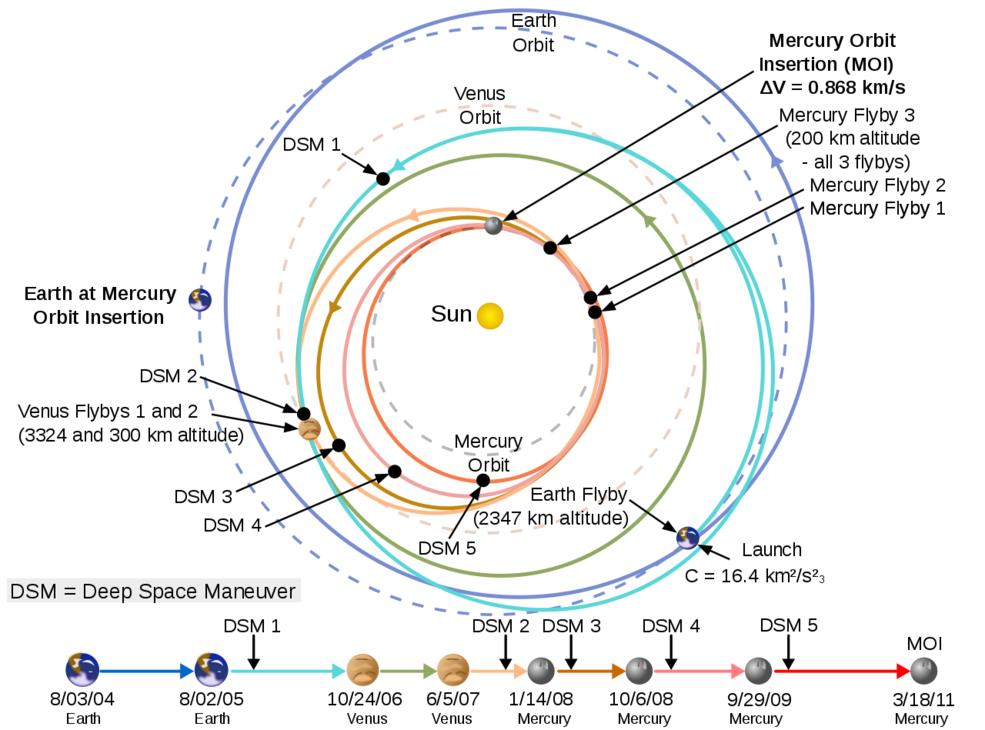
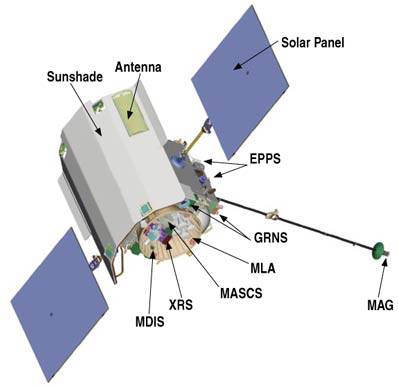
Left: Illustration of MESSENGER’s complex series of gravity assists before entering orbit around Mercury.
Right: Illustration showing MESSENGER’s science instruments.
MESSENGER carried seven instruments and a radio science experiment to complete its comprehensive study of Mercury and its environs:
- The Mercury Dual Imaging System (MDIS) consisted of wide-angle multi-spectral and narrow-angle monochrome cameras to image the surface of Mercury and investigated the diversity of geological terrains on the planet’s surface. Images taken with the narrow-angle camera resolved objects as small as 60 feet across.
- The Gamma-Ray and Neutron Spectrometer (GRNS) contained two sensors to collect data on the elemental composition of Mercury’s crust.
- The X-Ray Spectrometer (XRS) studied the elements in the top tens of millimeters of Mercury’s crust and monitored X-rays from the Sun bombarding the planet.
- The Magnetometer (MAG), mounted on a 12-foot boom to distance it from the spacecraft’s own magnetic field, characterized Mercury’s magnetic field.
- The Mercury Laser Altimeter (MLA) used laser pulses to determine the planet’s topography.
- The Mercury Atmospheric and Surface Composition Spectrometer (MASCS) combined an ultraviolet-visible spectrometer and a visible-infrared spectrograph to detect gases in Mercury’s tenuous atmosphere and minerals on its surface.
- The Energetic Particle and Plasma Spectrometer (EPPS) measured the composition, distribution, and energy of charged particles around Mercury.
- The Radio Science (RS) experiment used MESSENGER’s radio signals to track precisely the spacecraft’s trajectory, allowing the science team to determine Mercury’s gravity field.
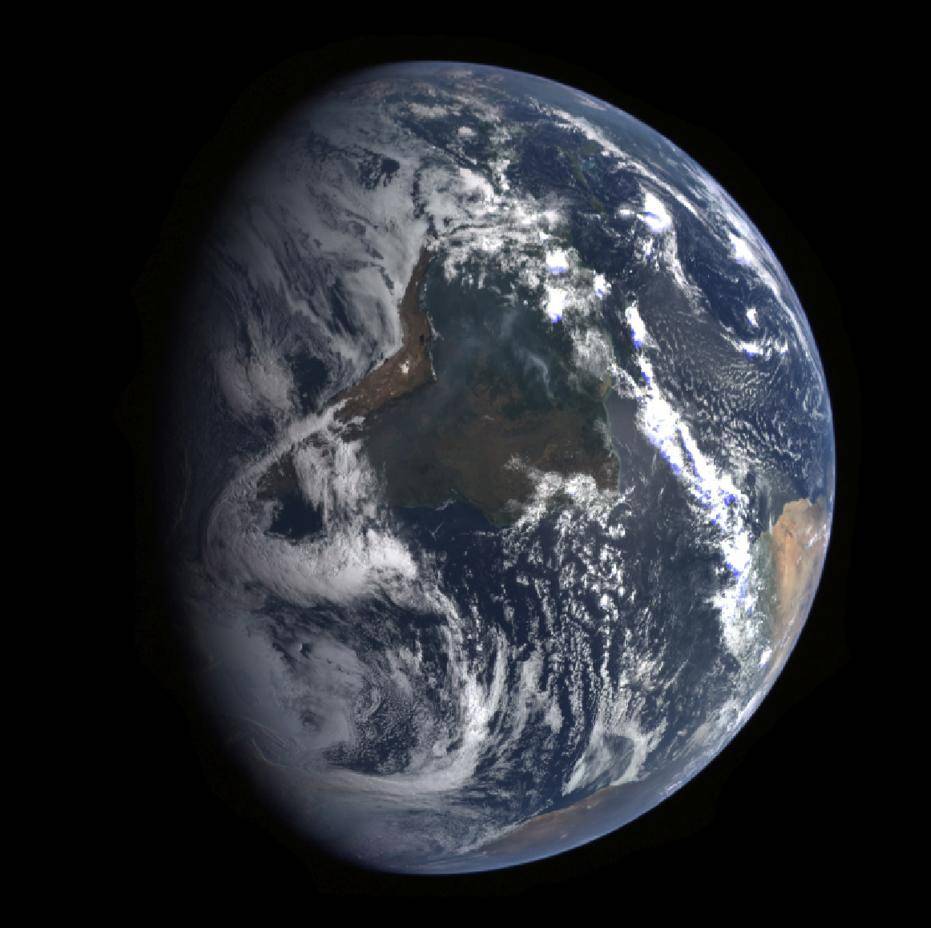
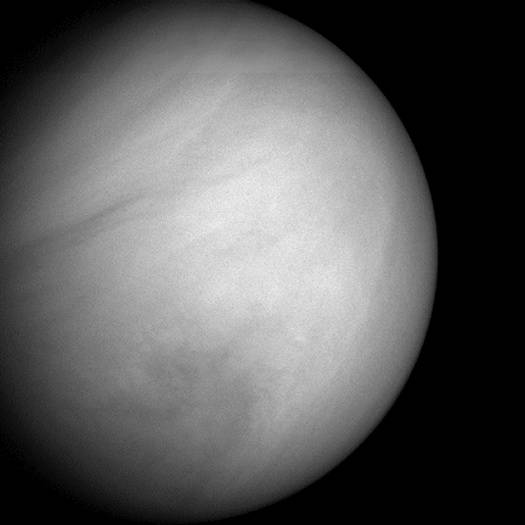
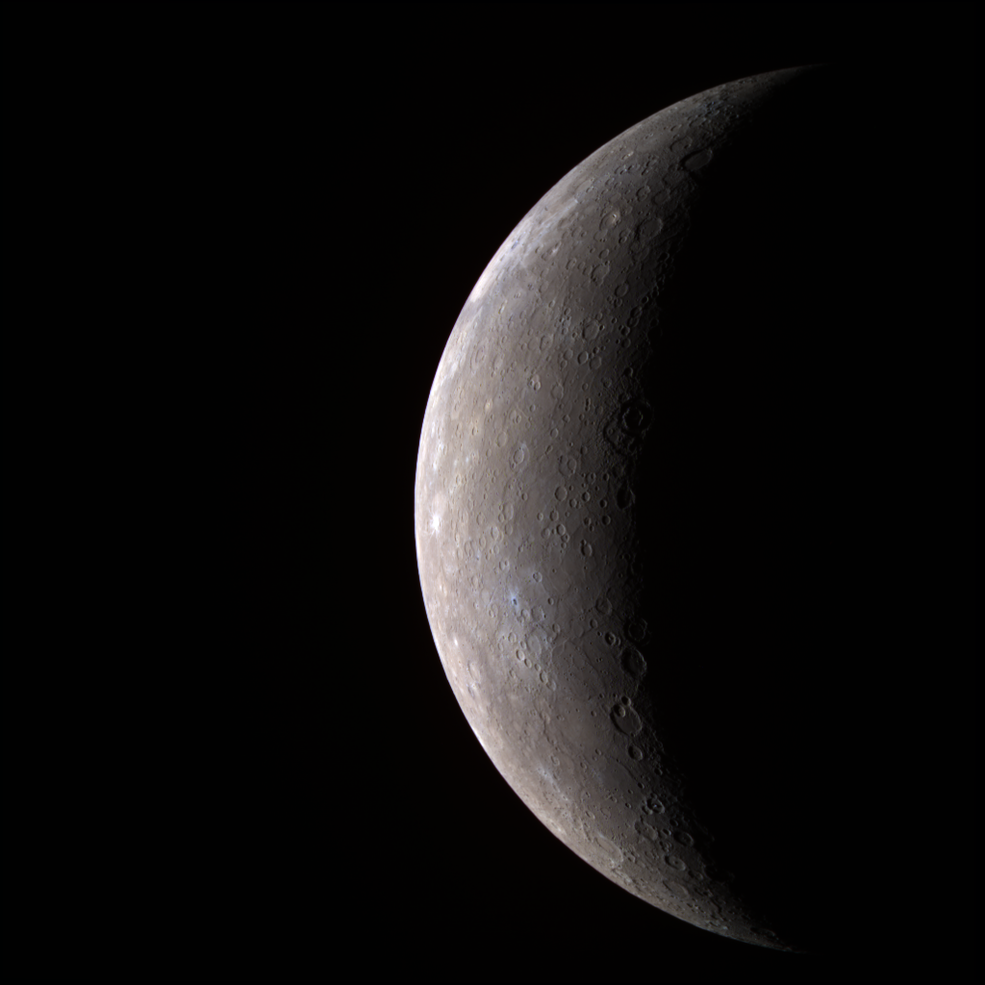
Left: MESSENGER photograph of Earth during the Aug. 2005 flyby. Middle: MESSENGER photograph of Venus during the second flyby in July 2006. Right: MESSENGER photograph of Mercury during the first flyby in Jan. 2008.

MESSENGER’s family portrait of the solar system taken in Nov. 2010.
On March 18, 2011, MESSENGER fired its main engine and entered a near-polar eccentric orbit around Mercury, with the low point reaching as near to the surface as 124 miles and the high point as far as 9,420 miles, completing each orbit in about 12 hours. This highly elliptical orbit allowed the spacecraft to cool after each close pass over Mercury’s hot dayside surface. After controllers verified that all the spacecraft systems were working properly, MESSENGER began its primary 1-year science mission on April 4, 2011. On March 18, 2012, MESSENGER started its first one-year extended mission, changing its orbital period one month later to 8 hours. During this first extension, MESSENGER discovered the presence of water ice and organic compounds in permanently shaded regions of Mercury’s north pole. NASA granted a second 24-month mission extension, beginning on March 18, 2013, during which MESSENGER’s closest-approach distance progressively decreased. In November 2013, MESSENGER observed the short-term comet 2P/Encke and the hyperbolic-orbit comet 2012 S1 ISON during their close approaches to the Sun, returning more than 700 images of the comets as well as science data from the MASCS and XRS instruments. Orbit-correction maneuvers raised MESSENGER’s closest-approach distance to Mercury multiple times in 2014 and early 2015, prolonging the mission. During a final six-week extension, onboard propellant was finally exhausted, and because no further orbit-correction maneuvers were possible the spacecraft crashed onto Mercury’s surface on April 30, 2015. The hardy spacecraft returned its final photograph shortly before it ended its highly successful mission.
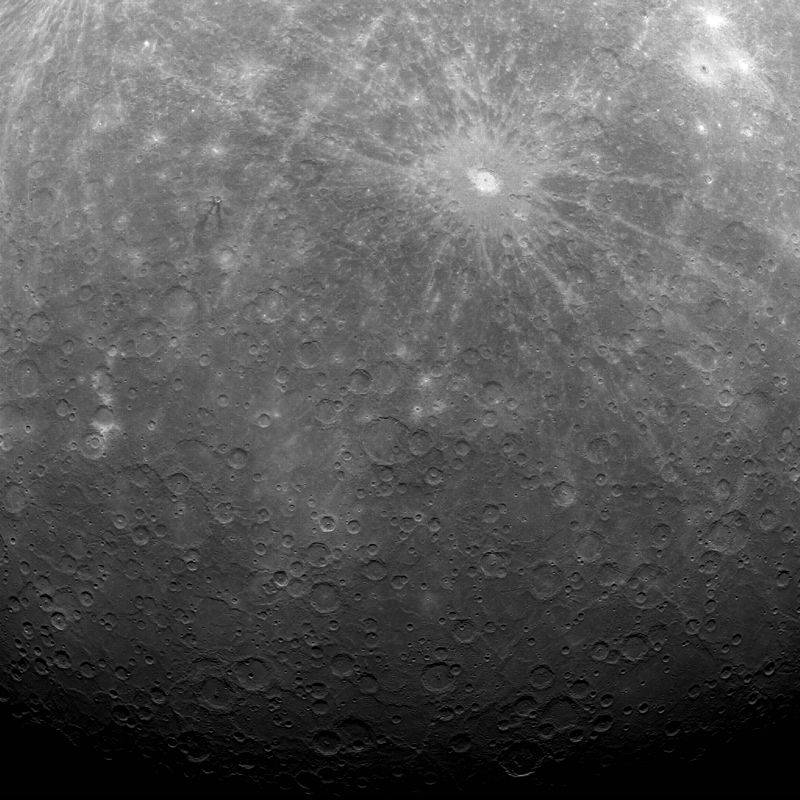
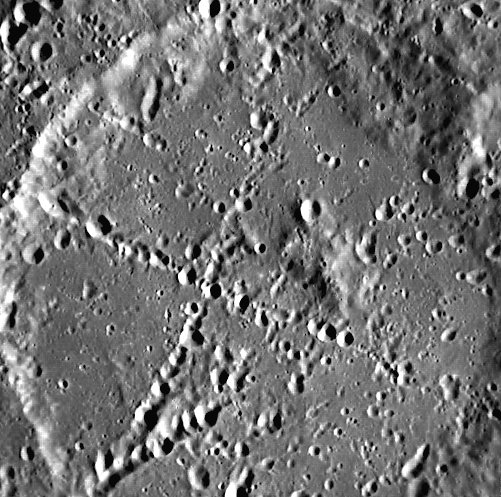
Left: MESSENGER’s first photograph taken from orbit around Mercury.
Right: Photograph of Crater Stevenson with perpendicular crater chains.
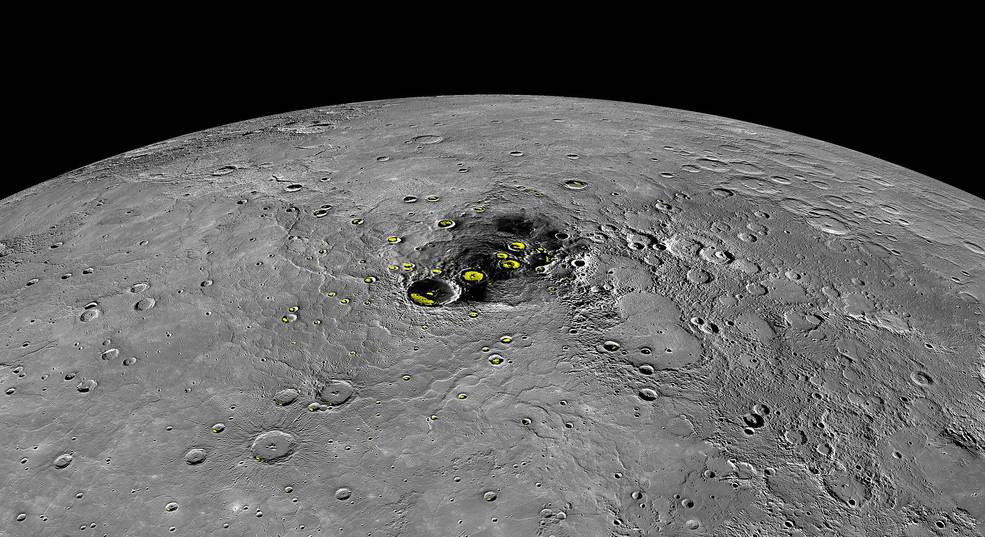
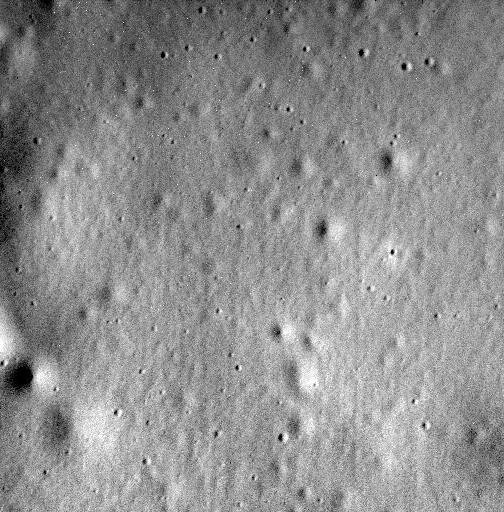
Left: Water ice (shown in yellow) discovered by MESEENGER near Mercury’s north pole.
Right: MESSENGER’s last photograph.
The MESSENGER spacecraft fundamentally changed our understanding of Mercury during its four-year orbital exploration of the planet, returning nearly 300,000 photographs and a wealth of information from its instruments. The formatted data totaling more than 10 terabytes reside in NASA’s Planetary Data System archive. Among the major findings were that Mercury harbors water ice and organic compounds at its north pole, that volcanism played a major role in shaping the planet’s surface, and that Mercury’s surface materials are more volatile-rich and chemically reduced than expected. Future robotic exploration of Mercury will have to wait until December 2025, when the joint European Space Agency and Japan Aerospace Exploration Agency BepiColombo mission delivers two spacecraft into orbit around the planet. The spacecraft were launched on Oct. 20, 2018, and similar to MESSENGER will make one flyby of Earth, two of Venus, and six of Mercury before finally reaching their target.
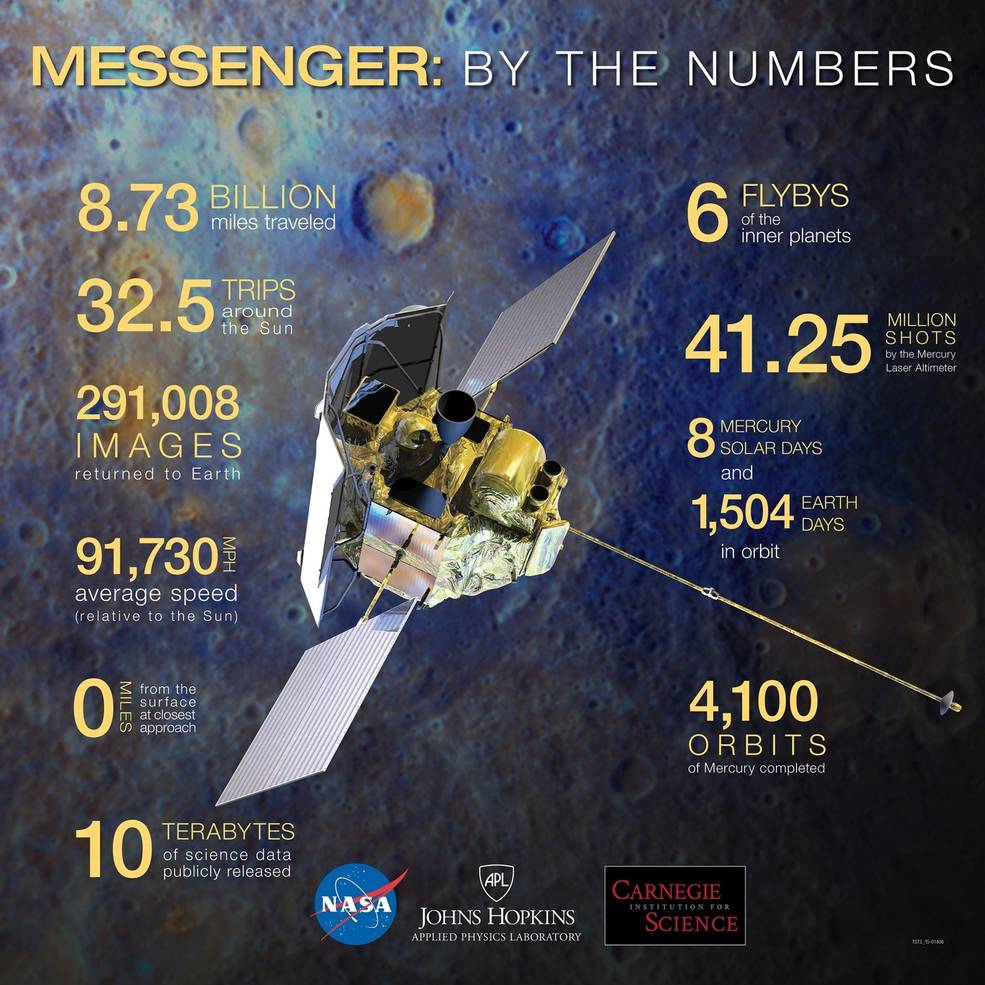
MESSENGER by the numbers.






















